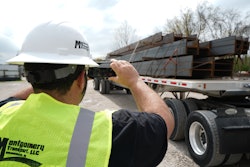
Fact No. 1: Vast amounts of data are available to trucking companies. Besides getting real-time data from telematics, ELDs, dashboard cams and transportation management software (TMS) components, companies gather data from insurance providers and public databases that include motor vehicle records, VIN records and federal safety collections.
Fact No. 2: The transportation industry is placing an ever-stronger emphasis on safety. Companies are prioritizing investments that can improve driver training, avert nuclear verdicts, mitigate risks and manage insurance premiums.
Let’s bring these two facts together by suggesting ways that data can and should be used to address safety concerns.
Ideally, one platform could pull data from disparate sources and compile it into an easy-to-use mechanism like a driver scorecard. Otherwise, management teams are inefficiently stitching together data points and working with inconsistent formats and outputs, all of which makes forming predictions and correlations much harder to do.
Assuming you have a system like this in place or are moving toward it, let’s take a look at how unified data can help make you safer. The key is to leverage and analyze the data to pinpoint potential risks, and then respond to those risks with concrete actions to reduce the risk levels.
Preventive driver training
Data can be applied before and after accidents happen to provide extra training for the most at-risk drivers.
Post-accident training would obviously be based on whatever incident has occurred. The sooner the training happens after the accident, the better. Reinforcement or remediation of certain material can help prevent the inciting behavior and thus reduce future accidents. It can also be offered to insurers as good faith proof of efforts to mitigate future risk.
Proper review and follow-up are essential to make sure the offending behavior is being controlled by the driver. Compliant drivers – ones who observe the rules, and correct behaviors when they do start to develop bad habits – are safer drivers. Studies show that post-accident training reduces the driver behavior in question by up to 80% over the following year and a half.
Pre-accident training can be applied towards any area that your predictive data is indicating. It could drop incident rates by much as 30%. Examining the data will expose training opportunities up and down your organization.
[Related: New predictive tools for fleets make inroads]
For instance, is a driver lately recording more incidents of hard braking? Or is excessive speed up across the entire fleet? These data points will help you target your communications and training. Again, the process is much more manageable if you have a system in place to handle such workflows by identifying behaviors at a certain threshold, matching them with appropriate training modules, alerts and follow-ups.
You may also link accident prevention intelligence to specific routes. Data can tell you everything from what time of day a particular road is the safest or what section of a route experiences higher accident rates. The data can get surprisingly granular. Drivers can be notified accordingly, whether that is done manually through a dispatcher or via an automated workflow.
The results make these efforts well worth your time and energy. Better training creates more prepared drivers, which results in fewer accidents, less chance of nuclear verdicts, reduced risk and improved relations with insurers that hopefully will produce lower or more stable premiums.
Beefing up compliance
Now that we’ve demonstrated how data can energize your safety program, let’s go a step further. A unified system and united data can aid in virtually every goal of your business, starting with compliance.
Let’s say the DOT pays a visit to you in Kansas City to perform an audit. However, your filing cabinets containing compliance paperwork are all in Dallas. While this sort of scenario is on the decline, it does exist.
Even if you’ve gone all digital with files, what happens if you have 50 locations nationwide and each location is a ‘silo’ that keeps its information separate and unintegrated? You will have problems with gathering, collating and presenting all of the data.
The right system will funnel all the relevant data into one vantage point and present it in an easily digestible format. Putting a system like this in place will help streamline and improve everything from troubleshooting in-the-minute operational issues to determining long-term strategy.
[Related: New services give BI power to small fleets]
Fleet executives need to see how the data from all locations fits together to get a cohesive, overall view of the business. A real-time, bird’s-eye view of the corporate situation is an efficient vehicle for achieving control and visibility into all aspects of the organization.
Your data is what you make of it. A thoughtful and thorough approach to data management, usage and analysis ensures it will point the way forward to success in each area of your business.
George Thellman is senior director of transportation management solutions at EOX Vantage













